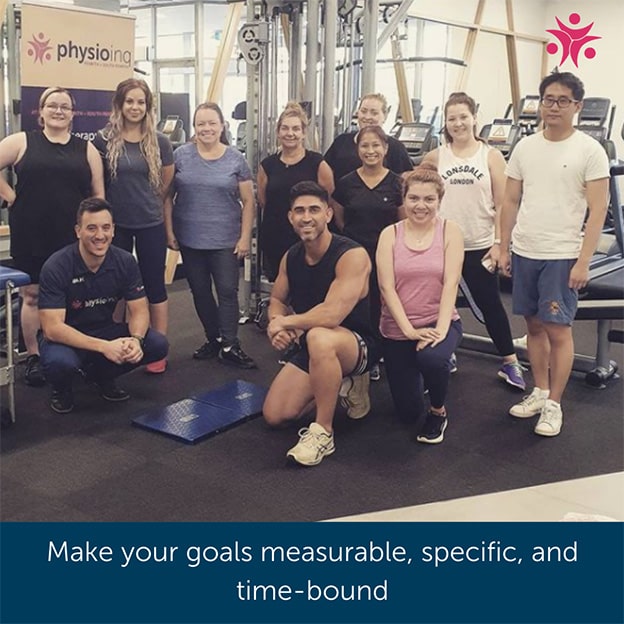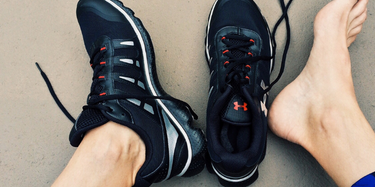Make an Appointment

What are your priorities?
Write them down! Perhaps you want to build strength or improve your stamina. Maybe you've heard that exercise helps reduce stress, in which case you definitely want to build a workout strategy that doesn't drive you further over the edge.
While you're at it, reflect upon the reasons your past efforts at launching a workout schedule have fallen flat, and come up with possible solutions to overcome them.
Be specific when setting your workout goals
If you can clearly define and visualize those goals, you're more likely to attain them. Here are a few good examples:
- "I want to look great in my cossie for our beach trip this summer!"
- "I want to reduce my body mass index by 3% in 30 days."
- "I want to be able to walk to the corner store and back without having to sit down and rest."
Open-ended timelines are fine, particularly if you, your doctor, or your trainer are concerned about you pushing yourself too hard.
Break up the journey with easy-to-meet benchmarks
Have you ever created a "to-do" list just for the satisfaction of crossing off items? If you have, you may as well admit that you've written down a few softballs to keep that feeling of accomplishment within reach and the momentum rolling. That's how you should think about setting workout goals.
Nothing's off the table, not even these little victories on the way to a hypothetical long-term goal of losing three dress sizes:
- Find a fitness center close to home
- Convince Casey from next door to join me every Tuesday
- Go to my first yoga class!
- Pull off downward dog without falling over
What might seem like a small feat to some could be monumental to you. Be sure to give yourself credit for those tasks that have been personal roadblocks in the past, like finding a sitter, dealing with social anxiety, or learning exercises that are compatible with a pre-existing injury or condition.
As a bonus, these so-called softballs give us the skills to adapt to future roadblocks and build up our confidence.
If you've failed to meet an objective, investigate the possible reasons and identify the obstacles that prevented you from obtaining it. Remind yourself that creating new habits takes time, and establishing your routine is a process. Read on for tools that will equip you to clear the path to success.
What do successful workout plans have in common?
Somebody once said that concrete plans make the difference between dreams and goals. You know what you want to accomplish, so how are you going to get there? These are what successful workout plans have in common:
1. Guided by a pro
Consider booking a personal trainer or an exercise physiologist to show you safe, effective exercises and help you develop a routine. You'll likely become more confident, efficient and motivated.
2. Ease into your current schedule
Yes, you'll have to commit to changes, but if you have to completely upend your life to reach your fitness goals, you're setting yourself up for failure. Sustainable workout plans adapt to an individual's typical routine as closely as possible in the beginning.
- Break up work tasks with short walks. You can always remind your boss that exercise breaks increase productivity[1]
- Ride your bike to work one day a week. Love it? Add more days.
- Set aside 10 minutes each morning for stretches (or old Jane Fonda VHS workout tapes; you do you). Add time for calisthenic exercises as you get used to waking up earlier.
- Find a gym with flexible hours that's close to home.
- Communicate with your friends, family or partner that you want their support as you change things up in your schedule. Give them actionable suggestions for helping you be successful.
3. Rely on good nutrition
Ask your doctor or a nutritionist for guidance in planning meals and snacks to fuel your body and help it recover from your new fitness routine, and place as much emphasis on creating new eating habits.
4. Include activities you can share with a friend
Partner up with a buddy, neighbor, or family member for mutual support and motivation. Make new friends in organized classes, and consider signing up for recreational outings that combine exercise with something fun: kayaking, archery, dog agility (yes, your dog's a motivator!), or day hikes are all great ways to get active while meeting new people or presenting opportunities for loved ones to join you. Become your own cheerleader
The worst thing you can do is have an "all-or-nothing" mindset. Building new routines takes time, and the adage that it takes 21 days to change a habit has long been debunked: According to a 2009 University College London study [2_], it takes anywhere from 18 to 254 days to form new habits, and an average of 66 days to normalize new routines and behavior_. Along the way, you'll have some blips and backslides. And that's okay! Just adapt and overcome, and be kind to yourself.
- Keep journal of your progress. If you feel you're falling into a rut--or falling out of your routine altogether--it helps to have a record of all your achievements.
- Give yourself a "free day" once a week when you can eat what you want, let your body relax and recover, and stave off the mindset that you're depriving yourself.
- Be open to trying new activities if you're getting bored or burned out.
If you plan on maintaining long-term fitness goals, your routine should be as flexible and resilient as you, yourself want to be. Approach your workout commitment as you would any other area of your life and remember to manage your expectations and adjust your goals accordingly.
Book an appointment with one of our exercise physiologists today for a custom training plan to help reach your fitness goals for 2021. Contact Physio Inq today.
Source links: (URL prefixes removed as per Constant Content requirements)
[1] qz.com/work/1561830/why-the-eight-hour-workday-doesnt-work/
[2] repositorio.ispa.pt/bitstream/10400.12/3364/1/IJSP_998-1009.pdf
Date Published: Thursday, January 14, 2021
Locate a Mobile Exercise Physiology
Service Near me
Get the experience & convinence you deserve to support your or a loved one's allied health needs.
Our Mobile Exercise Physiology team are currently serving & taking appointments in the following states and regions in Australia:
Need to get into direct contact with ur Client Services team? We're all ears. Call our team directly on 1300 731 733










